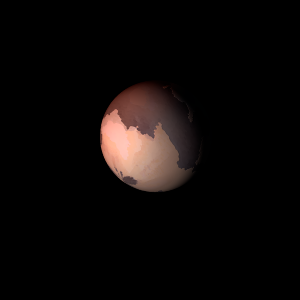|
|
Space Astro
|
Info for exoplanet "Wapuv Er"
| Scientific (actual) data |
|---|
| Name | GJ 357 b |
| Planet status | Confirmed |
| Planet mass | 0.006566 |
| Radius | 0.10411 |
| Orbital period | 3.93086 |
| Semi major axis | 0.033 |
| Orbit eccentricity | 0.047 |
| Inclination | 88.496 |
| Discovered | 2019 |
| Updated | 2020-07-21 |
| Omega | 220 |
| Tperi | 2458520 |
| Tzero tr | 2458520 |
| Impact parameter | 0.529 |
| K | 1.84 |
| Temperature (kelvin) | 525 |
| Publication | Published in a refereed paper |
| Detection type | Primary Transit |
| Mass measurement type | Radial Velocity |
| Radius measurement type | Primary Transit |
| Alternate names | TOI-562.01 |
| Star name | GJ 357 |
| Right ascension | 144.01° |
| Declination | -21.66° |
| Star distance | 9.444 |
| Star metallicity | -0.12 |
| Star mass | 0.342 |
| Star radius | 0.337 |
| Star sp type | M2.5 V |
| Star temperature | 3505 |
| Star alternate names | L 678-39, Gliese 357, TOI 562 |
| Wikipedia article | GJ 357 b |
Back
| |
| Fictional info (?) |
|---|
| Suggested name | Wapuv Er |
| Planet type | Hot planet |
| A prominent result is the "great brown spot", a giant storm that is known to have existed for centuries since it was first detected by scanner. |
| Atmosphere | Ammonia | 38% |
| Carbonyl sulfide | 25% |
| Sulfur dioxide | 22% |
| Formaldehyde | 6% |
| Hydrogen chloride | 4.8% |
| Ammonium hydrosulfide (NH4SH) | 1.9% |
| Helium | 1.3% |
| Molecular hydrogen | 0.028% |
| Atmospheric pressure | 0.5 bar |
 |
| No known satellites |
| Google search for Wapuv er |
|
Website by Joachim Michaelis
|
|
|
|